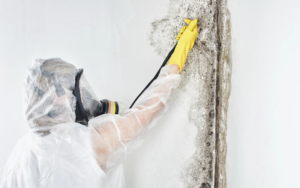A clean, well-maintained home or business is an excellent way to boost curb appeal and uplift the tone of the neighborhood. It also increases your property’s value.

Pressure washing is an easy and efficient way to do a thorough cleaning that would take much longer with a regular garden hose. Contact Summerville Pressure Wash Pros for professional help.
Pressure washing is effective for a variety of surfaces and materials. However, the extensive water usage associated with these machines can have detrimental environmental impacts, if not managed responsibly. This is especially true in regions with limited natural water resources. Water-efficient techniques like adjusting nozzle settings, using low pressure, and collecting and reusing runoff are vital for reducing impact. By implementing these strategies, it’s possible to achieve professional results while decreasing resource usage.
Another major concern relates to the chemicals used in the cleaning process. Many common cleaning agents are highly toxic to soil and aquatic ecosystems. When they seep into storm drainage systems, these contaminants can end up in rivers, lakes, and oceans where they can harm wildlife and contaminate drinking water supplies.
As more and more people become environmentally conscious, the demand for pressure washing services that employ eco-friendly practices is increasing. These services offer a range of services that go beyond simple surface cleaning, such as mold, mildew, and fungus removal. They also offer protective coatings that help minimize future damage and re-contamination.
Finally, a comprehensive approach to environmental responsibility requires careful management of wastewater disposal. Most pressure washing activities require the discharge of wastewater into storm drains, unless the equipment operator takes steps to collect and dispose of it. This contaminated runoff can contain detergents, solvents, and other harmful substances that can contaminate soil and disrupt natural ecosystems.
Choosing the right time of day to pressure wash is another way to reduce your environmental footprint. The sun’s angle and temperature affect how quickly a surface dries. A good rule of thumb is to begin the job in the morning before it gets too hot, so you can complete your work and move on to other tasks.
Nozzles
A pressure washer nozzle contains a fixed opening or orifice of a particular size that creates a specific pressure. It is important to understand how the different nozzles on your machine work and what each one can do for you, especially when it comes to cleaning different surfaces. Nozzles tend to come in a variety of colors, each indicating a different spray pattern and pressure level.
For example, yellow nozzles produce a 15-degree spray fan that can be effective for heavy-duty cleaning applications such as paint removal. Green nozzles, on the other hand, produce a 25-degree fan that is ideal for general cleaning. It can help you clean concrete pads, garages, and outdoor furniture. It is also a great choice for prepping surfaces before painting.
Aside from choosing the appropriate nozzle, it is also important to consider the surface you are going to be cleaning and the cleaning agent you will use. For instance, if you are washing wood furniture, it is recommended to use the lowest possible pressure settings and hold the nozzle at least two feet away from the surface. This will minimize the risk of damaging the furniture or lifting the paint.
Using a non-slip boot or waterproof apron can also reduce the risk of injury. In addition, it is advisable to check for leaks and verify that the hoses are properly attached. A specialized pipe cleaning nozzle can also be useful for removing clogs from a sewer line or other hard-to-reach areas.
The proper nozzle size should match the maximum pressure rating of your machine. It is also important to keep in mind that a nozzle of the incorrect size will decrease the power and efficiency of your pressure washer. Fortunately, many pressure washer vendors have a chart that shows the nozzle size to use for each machine.
Cleaning Agents
A cleaning agent, or cleaning chemical, is a substance used to remove dirt, stains, and other contaminants from surfaces like floors, walls, countertops, and clothes. They work by altering the physical or chemical properties of dirt or stains, making them easier to lift or dissolve. Many cleaning agents are formulated to be effective for specific types of dirt or stains. For instance, surfactants can reduce the surface tension of water and help it penetrate deep into pores and crevices where dirt and stains typically reside. Soaps and detergents are classic examples of surfactant-based cleaning agents. Other cleaning agents, such as bleach, act as an oxidizing agent and break down the color molecules in stains, leaving surfaces whiter.
There are several different types of cleaning agents on the market, but they all fall into one of four categories: detergents, degreasers, and abrasives. Detergents are soaps and other surfactant-based solutions that make it easy to wash away dirt from surfaces with pressurized water nozzles. Degreasers have a higher pH and contain organic solvents that help to break down oils and greases on surfaces. Abrasives are hard, granular substances that require physical force to scrub away dirt from surfaces.
Cleaning agents come in liquids, powders, gels, and sprays that can be used to clean a wide range of surfaces and items. They can be used alone or in combination with other cleaning products, such as scrubbing brushes or sponges. Many are also formulated to be environmentally friendly, so they can be safely used in homes and commercial environments.
While cleaning agents are often regarded as safe, some can be harsh or toxic depending on the type and concentration of chemicals they contain. These substances can irritate the skin and eyes, and may cause allergic reactions in some individuals. They can also contaminate the environment by polluting the air and water with harmful particles, particularly when they are used in large amounts or for extended periods of time. These contaminants are especially dangerous for infants and children, professionals working in confined spaces, and individuals with respiratory or heart conditions.
Safety
Pressure washing is an effective way to remove dirt and grime, extending the life of exterior surfaces like siding, roofs, driveways, patios, and decks. It also eliminates the need for toxic cleaners and chemicals that can negatively impact the environment and human health. However, homeowners should always consider the risks associated with DIY cleaning projects, especially when using high-pressure equipment and chemical solutions.
Injuries
The intense water pressure and chemicals used in the washers can cause serious injuries if not handled correctly. The nozzles are powerful and can kick back with great force, making it easy to get sprayed in the face or head. This can result in lacerations, bruises, and cuts. In the worst-case scenario, it can even damage internal organs. The risk of injury is exacerbated by the lack of safety equipment, such as non-slip footwear and protective eyewear.
Environmental Impacts
Depending on the type of detergent or soap used and how it’s applied, pressure washing can have major impacts on the surrounding environment. For example, oily messes can wash into the groundwater and contaminate local ecosystems. In addition, high-pressure water can erode soil and harm nearby vegetation. Rinsing thoroughly can help minimize the impact.
Additionally, individuals should be aware that pressure washing can generate hazardous waste, including hydrofluoric acid, muriatic acid, and other acids and chemicals. This can increase cleanup costs and limit disposal options. When pressure washing, it’s important to test a small area before applying the solution to the entire surface. It’s also essential to wear the proper safety gear, including gloves, eye protection, and a face mask. Finally, it’s a good idea to rope off the work area and keep children and pets away.








